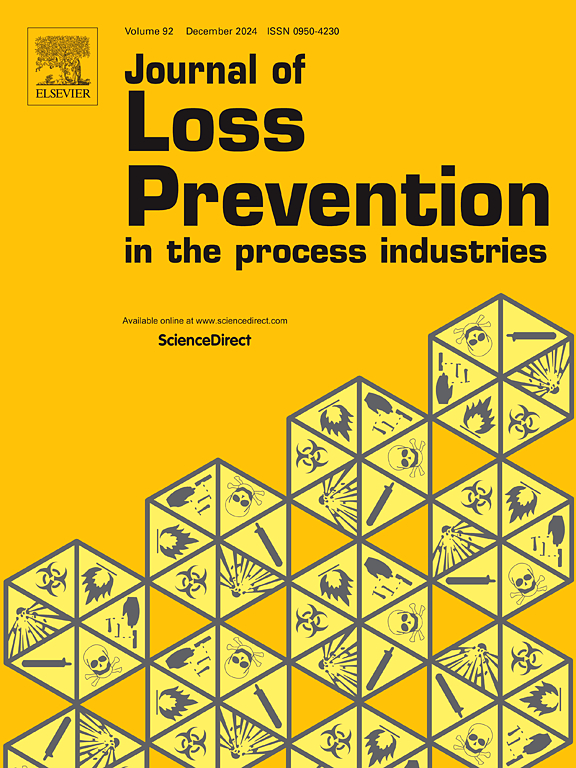Feasible approach to enhance inhibition performance of Mg-Al hydrotalcite on polyethylene dust explosion: Phytic-acid modification
IF 3.6
3区 工程技术
Q2 ENGINEERING, CHEMICAL
Journal of Loss Prevention in The Process Industries
Pub Date : 2025-01-05
DOI:10.1016/j.jlp.2025.105547
引用次数: 0
Abstract
A modification chemical inhibitor (phytic acid-modified Mg-Al hydrotalcite) was synthesized via using phytic acid to chelate metal ions. Mg-Al hydrotalcite was used as the base material, the phytic acid molecules were grafted onto the surface of Mg-Al hydrotalcite via self-assembly through coordination bonds. The effectiveness of phytic acid-modified Mg-Al hydrotalcite in the inhibition of polyethylene dust explosion was investigated. The results showed that phytic acid modification effectively upgraded the inhibition performance of original Mg-Al hydrotalcite. At the phytic acid-modified Mg-Al hydrotalcite inhibition ratio of 1.0, the reduction of maximum explosion pressure and maximum pressure rise rate increased by 21.51% and 26.83% respectively compared to original Mg-Al hydrotalcite. Combining the material characterization and thermal analysis, the inhibition mechanism of phytic acid-modified Mg-Al hydrotalcite on polyethylene dust explosion was deeply revealed. It is noticeable that phytic acid-modified Mg-Al hydrotalcite has a better chemical inhibition effect than original that. The research results provide a basis for preventing and controlling polyethylene dust explosion disasters, and offer a new insight for the development of novel explosion inhibition materials.

求助全文
约1分钟内获得全文
求助全文
来源期刊
CiteScore
7.20
自引率
14.30%
发文量
226
审稿时长
52 days
期刊介绍:
The broad scope of the journal is process safety. Process safety is defined as the prevention and mitigation of process-related injuries and damage arising from process incidents involving fire, explosion and toxic release. Such undesired events occur in the process industries during the use, storage, manufacture, handling, and transportation of highly hazardous chemicals.

 求助内容:
求助内容: 应助结果提醒方式:
应助结果提醒方式:


